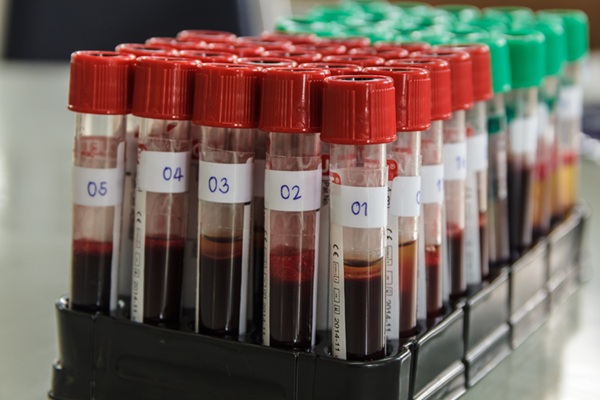C. Difficile Colonization Among Children in Resource-Limited Settings
|
By LabMedica International staff writers Posted on 02 Mar 2022 |

This study describes the epidemiology and risk factors for colonization among children in the etiology, risk factors, and interactions of enteric infections and malnutrition. Also explored was whether C. difficile detection contributed to longer-term health outcomes.
Clostridioides difficile is a bacterium that causes severe diarrhea and colitis. It’s estimated to cause almost half a million infections in the USA each year. About 1 in 6 patients who get C. diff will get it again in the subsequent 2-8 weeks. One in 11 people over age 65 diagnosed with a healthcare-associated C. diff infection die within one month.
High rates of C. difficile colonization have been documented among infants in resource sufficient settings, where C. difficile infection (CDI) rates can be as high as 90% among hospitalized neonates. Colonization decreases with increasing age until age two when rates start to mirror healthy adults. Some studies have indicated that C. difficile may be more prevalent than rotavirus or Cryptosporidium in children presenting with diarrhea to the hospital.
Infectious Disease specialists at The University of Virginia School of Medicine (Charlottesville, VA, USA) conducted a study at eight sites: Dhaka, Bangladesh; Fortaleza, Brazil; Vellore, India; Bhaktapur, Nepal; Loreto, Peru; Naushero Feroze, Pakistan; Venda, South Africa; and Haydom, Tanzania. The study ran from November 2009 through February 2014. The team tested 41,354 monthly non-diarrheal and diarrheal stools for C. difficile toxin genes (tcdA and tcdB) using quantitative polymerase chain reaction (qPCR) in 1,715 children from birth to age two years.
The QIAmp Fast DNA Stool Mini Kit (Qiagen, Venlo, The Netherlands) was used to extract total nucleic acid from the stool specimens. TaqMan Array Cards (TAC) were developed to detect 29 enteropathogens via qPCR using AgPath One Step Realtime PCR kit (Thermo Fisher Scientific, Waltham, MA, USA). The qPCR assays targeting C. difficile tcdA (enterotoxin) and tcdB (cytotoxin) genes were validated on the TaqMan Array platform, demonstrating 100% sensitivity and 100% specificity on clinical specimens using a secondary real time PCR as confirmation.
Monthly stool samples were tested for myeloperoxidase (MPO; measured in ng/m), neopterin (NEO; measured in nmol/L), and α-1-antitrypsin (AAT; measured in mg/g) and analyzed on the logarithmic scale. Serum α-1-acid glycoprotein was measured at months 7, 15, and 24 (AGP; measured in mg/dL). Lactulose/mannitol excretion ratios (LMR) were measured in urine at 3, 6, 9, and 15 months. Plasma zinc and retinol were measured at 7, 15, and 24 months.
The scientists reported that the prevalence of C. difficile detection was lower in diarrheal (2.2%; n= 151/6,731) compared to non-diarrheal stools (6.1%; n= 2106/34,623). By 24 months of age, the cumulative incidence of C. difficile varied widely by site, ranging from 17.9% (n=44; Pakistan) to 76.3% (n=148; Peru) of children having at least one positive stool. Only Bangladesh and Pakistan had seasonal differences in C. difficile detection. Female gender (adjusted risk ratio (aRR):1.18), cephalosporin use in the past 15 days (aRR: 1.73), and treated water (aRR: 1.24) were risk factors for C. difficile positivity. C. difficile carriage was significantly associated with elevated fecal myeloperoxidase, neopterin, and α-1-antitrypsin, but no associations were found between C. difficile and child growth at 24 months of age.
The authors concluded that C. difficile colonization among children ages 0-2 years was variable across low-resource settings. Significant elevation of intestinal inflammation and barrier disruption markers associated with C. difficile detection suggests subclinical impact of colonization. The study was published on February 09, 2022 in the journal Clinical Microbiology and Infection.
Related Links:
University of Virginia School of Medicine
Qiagen
Thermo Fisher Scientific
Latest Microbiology News
- 15-Minute Blood Test Diagnoses Life-Threatening Infections in Children
- High-Throughput Enteric Panels Detect Multiple GI Bacterial Infections from Single Stool Swab Sample
- Fast Noninvasive Bedside Test Uses Sugar Fingerprint to Detect Fungal Infections
- Rapid Sepsis Diagnostic Device to Enable Personalized Critical Care for ICU Patients
- Microfluidic Platform Assesses Neutrophil Function in Sepsis Patients
- New Diagnostic Method Confirms Sepsis Infections Earlier
- New Markers Could Predict Risk of Severe Chlamydia Infection
- Portable Spectroscopy Rapidly and Noninvasively Detects Bacterial Species in Vaginal Fluid
- CRISPR-Based Saliva Test Detects Tuberculosis Directly from Sputum
- Urine-Based Assay Diagnoses Common Lung Infection in Immunocompromised People
- Saliva Test Detects Implant-Related Microbial Risks
- New Platform Leverages AI and Quantum Computing to Predict Salmonella Antimicrobial Resistance
- Early Detection of Gut Microbiota Metabolite Linked to Atherosclerosis Could Revolutionize Diagnosis
- Viral Load Tests Can Help Predict Mpox Severity
- Gut Microbiota Analysis Enables Early and Non-Invasive Detection of Gestational Diabetes
- Credit Card-Sized Test Boosts TB Detection in HIV Hotspots
Channels
Clinical Chemistry
view channel
VOCs Show Promise for Early Multi-Cancer Detection
Early cancer detection is critical to improving survival rates, but most current screening methods focus on individual cancer types and often involve invasive procedures. This makes it difficult to identify... Read more
Portable Raman Spectroscopy Offers Cost-Effective Kidney Disease Diagnosis at POC
Kidney disease is typically diagnosed through blood or urine tests, often when patients present with symptoms such as blood in urine, shortness of breath, or weight loss. While these tests are common,... Read moreMolecular Diagnostics
view channel
New Biomarker Panel to Improve Heart Failure Diagnosis in Women
Heart failure affects millions worldwide, yet many women are still misdiagnosed or diagnosed too late. Although heart failure broadly means the heart cannot pump enough blood to the body’s cells, its two... Read more
Dual Blood Biomarkers Improve ALS Diagnostic Accuracy
Diagnosing amyotrophic lateral sclerosis (ALS) remains difficult even with advanced imaging and genetic tools, especially when clinicians must distinguish it from other neurodegenerative conditions that... Read moreHematology
view channel
ADLM’s New Coagulation Testing Guidance to Improve Care for Patients on Blood Thinners
Direct oral anticoagulants (DOACs) are one of the most common types of blood thinners. Patients take them to prevent a host of complications that could arise from blood clotting, including stroke, deep... Read more
Viscoelastic Testing Could Improve Treatment of Maternal Hemorrhage
Postpartum hemorrhage, severe bleeding after childbirth, remains one of the leading causes of maternal mortality worldwide, yet many of these deaths are preventable. Standard care can be hindered by delays... Read more
Pioneering Model Measures Radiation Exposure in Blood for Precise Cancer Treatments
Scientists have long focused on protecting organs near tumors during radiotherapy, but blood — a vital, circulating tissue — has largely been excluded from dose calculations. Each blood cell passing through... Read moreImmunology
view channel
Chip Captures Cancer Cells from Blood to Help Select Right Breast Cancer Treatment
Ductal carcinoma in situ (DCIS) accounts for about a quarter of all breast cancer cases and generally carries a good prognosis. This non-invasive form of the disease may or may not become life-threatening.... Read more
Blood-Based Liquid Biopsy Model Analyzes Immunotherapy Effectiveness
Immunotherapy has revolutionized cancer care by harnessing the immune system to fight tumors, yet predicting who will benefit remains a major challenge. Many patients undergo costly and taxing treatment... Read morePathology
view channel
AI Tool Improves Accuracy of Skin Cancer Detection
Diagnosing melanoma accurately in people with darker skin remains a longstanding challenge. Many existing artificial intelligence (AI) tools detect skin cancer more reliably in lighter skin tones, often... Read more
Highly Sensitive Imaging Technique Detects Myelin Damage
Damage to myelin—the insulating layer that helps brain cells function efficiently—is a hallmark of many neurodegenerative diseases, age-related decline, and traumatic injuries. However, studying this damage... Read moreTechnology
view channel
Portable Biosensor Diagnoses Psychiatric Disorders Using Saliva Samples
Early diagnosis of psychiatric disorders such as depression, schizophrenia, and bipolar disorder remains one of medicine’s most pressing challenges. Current diagnostic methods rely heavily on clinical... Read more
Cell-Sorting Device Uses Electromagnetic Levitation to Precisely Direct Cell Movement
Sorting different cell types—such as cancerous versus healthy or live versus dead cells—is a critical task in biology and medicine. However, conventional methods often require labeling, chemical exposure,... Read moreIndustry
view channel
Co-Diagnostics Forms New Business Unit to Develop AI-Powered Diagnostics
Co-Diagnostics, Inc. (Salt Lake City, UT, USA) has formed a new artificial intelligence (AI) business unit to integrate the company's existing and planned AI applications into its Co-Dx Primer Ai platform.... Read more
























